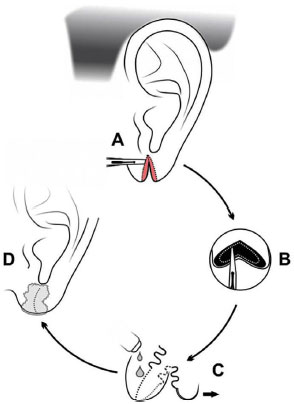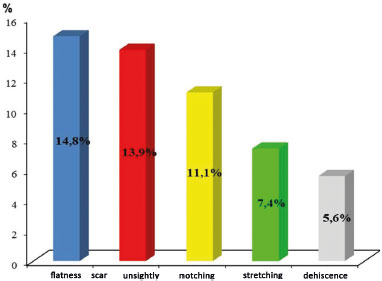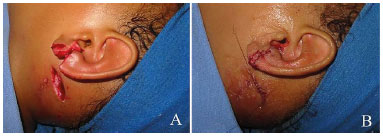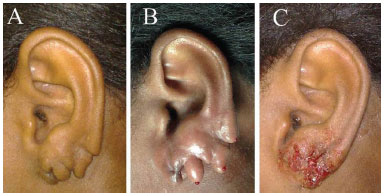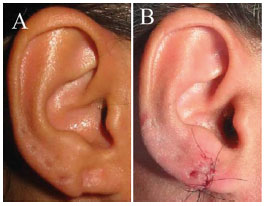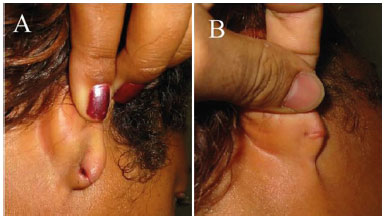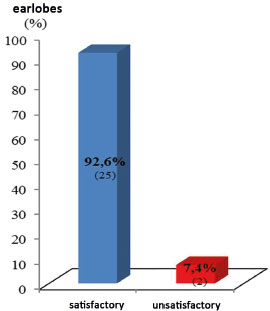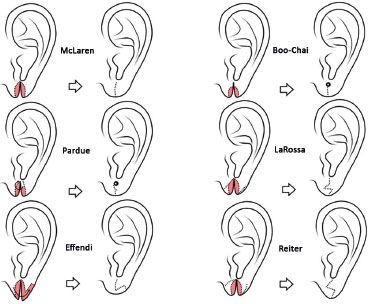ABSTRACT
INTRODUCTION: The use of ear ornaments is a multicultural practice. The lack of objective evaluations published in the national and international literature is surprising considering the high incidence of torn earlobe (TEL) worldwide.
OBJECTIVE: Evaluation of the results of torn earlobe repair with simple marginal excision and closure using a tissue adhesive.
METHODS: This was a prospective study in which TELs (36) were treated by simple excision of epithelialized edges and closure using cyanoacrylate as tissue adhesive.
RESULTS: TELs caused by earrings (91.7%) and trauma (8.3%) were treated. The following issues were found: flatness (14.8%), unsightly scar (13.9%), notching (11.1%), stretched earlobe (7.4%), and dehiscence (5.6%). No cases of necrosis or keloid scars occurred.
CONCLUSIONS: The proposed treatment proved safe and had satisfactory cosmetic results in 92.6% of patients.
Keywords: Pinna; Pinna/abnormalities; Reconstructive surgical procedures; Adhesives; Cyanoacrylates.


